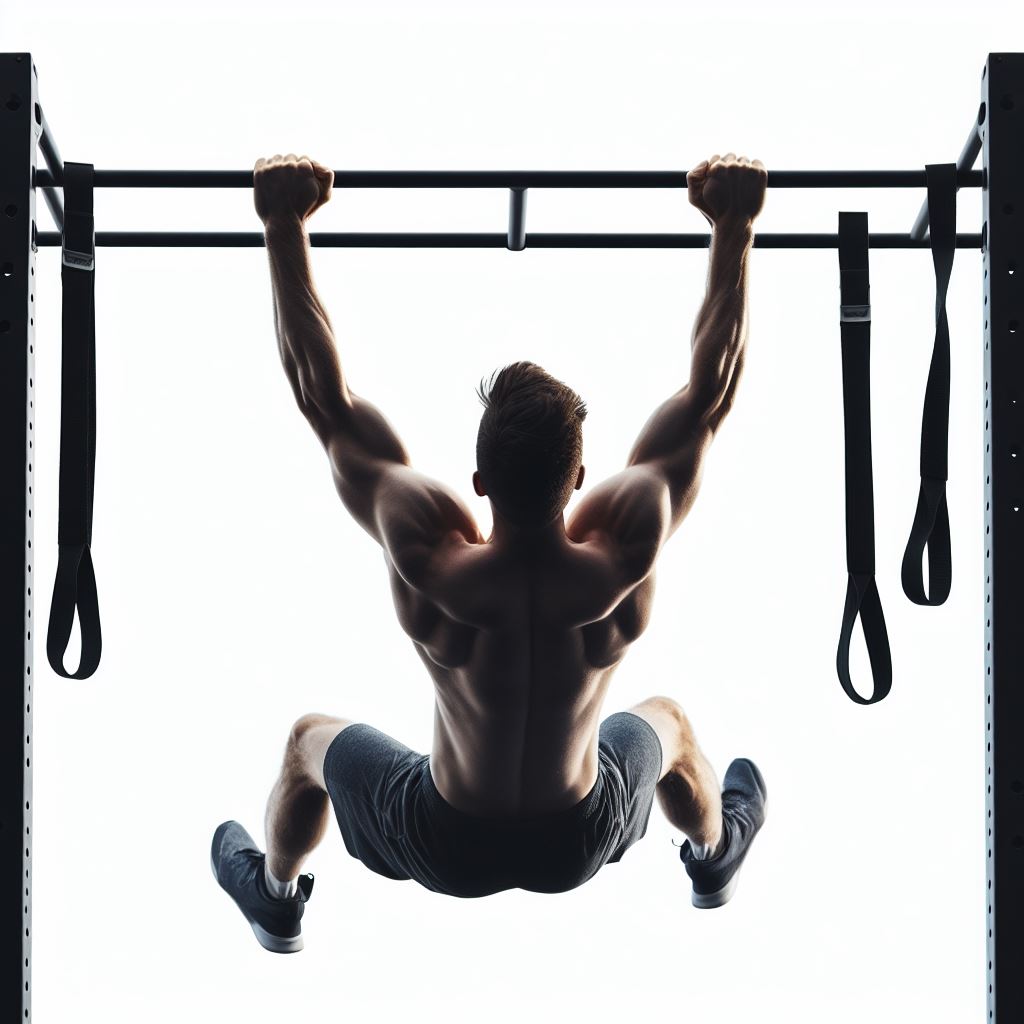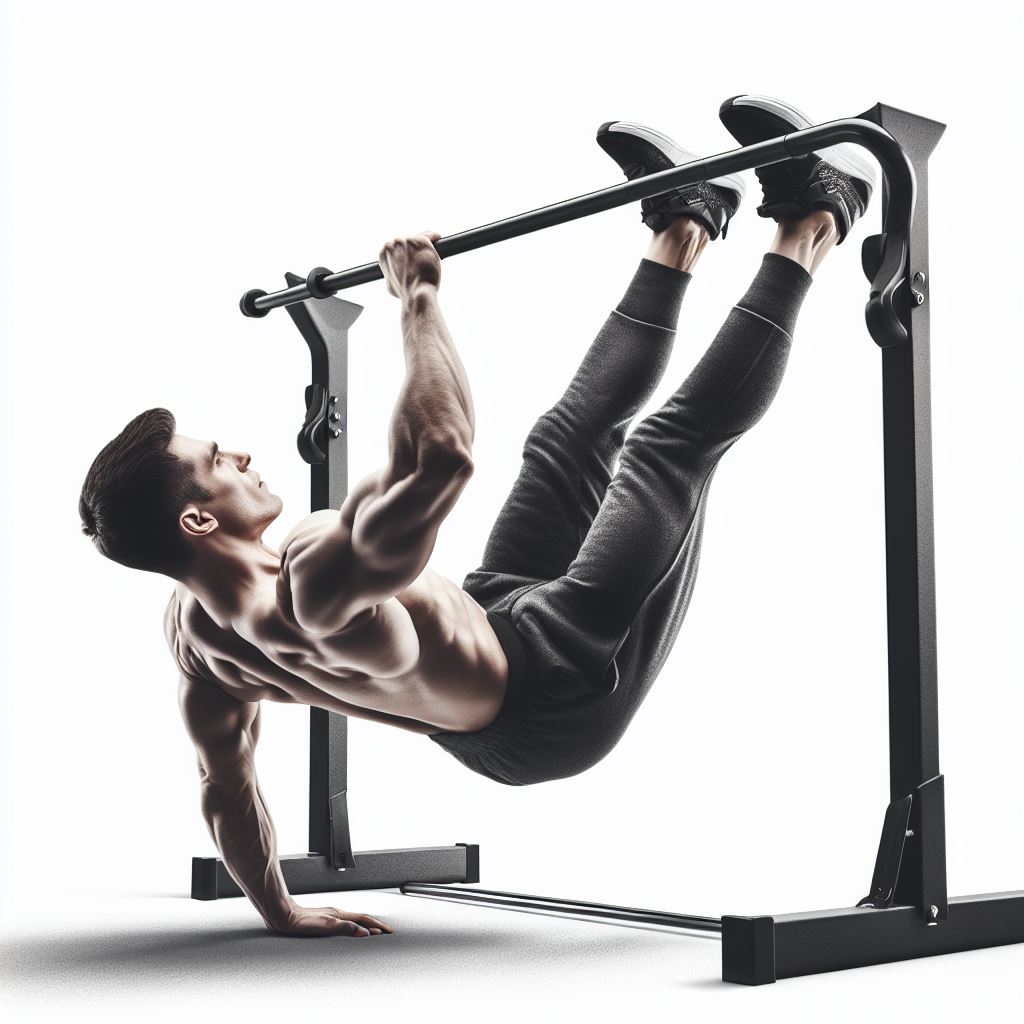Table of Contents
Master the art of the reverse pull-up with our comprehensive handbook. Discover expert techniques, tips, and exercises to achieve your fitness goals. Elevate your workout routine today.
In the realm of strength training, there exists a hidden gem called the reverse pull-up that can work wonders for your upper body. Within this extensive manual, we will guide you through the intricate facets of reverse pull-ups, encompassing their advantages, correct technique, and diverse adaptations.
Understanding the Reverse Pull-Up
The reverse pull-up, also recognized as the body row or inverted row, stands as a bodyweight exercise that primarily targets the muscle groups residing in your upper back, shoulders, and arms. Diverging from the traditional pull-up, where you hoist your entire body to a high bar, the reverse pull-up entails pulling your chest upwards toward a steadfast bar, usually situated at hip or waist level.
The Gains of Reverse Pull-Ups
- Elevated Upper Body Power: Engaging in reverse pull-ups nurtures the development of robust upper body muscles, such as the lats, traps, and biceps.
- Enhanced Posture: The consistent incorporation of this exercise has the potential to rectify posture irregularities by reinforcing the muscles responsible for maintaining an erect spine.
- Enhanced Equilibrium and Coordination: The performance of reverse pull-ups stimulates a wide array of muscle groups, consequently refining balance and coordination.
- Adaptability: This exercise can be customized to suit individuals of diverse fitness levels, thereby ensuring inclusivity for a broad spectrum of enthusiasts.
- Reduced Susceptibility to Injuries: Bolstering the muscles in your back and shoulders serves as a preventive measure against injuries stemming from poor posture and feeble upper body musculature.
Embarking on Your Journey
Essential Equipment
Before embarking on your voyage of reverse pull-ups, you’ll need to gather the following paraphernalia:
- A resilient horizontal bar or a securely affixed surface at hip or waist level.
- Comfortable workout attire.
- Athletic shoes boast excellent traction.
Prudent Form
To execute a reverse pull-up effectively, follow these guidelines:
- Position yourself in front of the bar, ensuring your feet are at hip-width distance.
- Slightly bend your knees and lean backward, maintaining a straight bodily alignment.
- Grasp the bar with an overhand grip, with your palms facing away from your body and a grip slightly wider than shoulder-width.
- Suspend your body from the bar with fully extended arms.
- Keep your physique in a straight line from the crown of your head to your heels.
- Elevate your chest toward the bar while squeezing your shoulder blades together.
- Lower your body in a controlled manner.
Proceed to repeat this sequence for the desired number of repetitions, commencing with three sets of 10-12 repetitions and progressively increasing your workload.
Variations
1. The Singular Arm Reverse Pull-Up
For those in search of a more challenging endeavor, consider experimenting with the one-arm reverse pull-up. This variant involves gripping the bar with one hand while maintaining a linear body posture, thereby intensifying the exertion on one side of your body.
2. The Resistance Band Assisted Reverse Pull-Up
If you’re new to reverse pull-ups or striving to augment your strength, ponder employing resistance bands. These bands can be fastened to the bar and looped around your body, furnishing supplementary support. Great post to read Hyperlocal Social Media Marketing.
3. Inverted Rows with Suspension Apparatus
Utilize a suspension trainer like the TRX to carry out inverted rows. This modification not only targets your back and arms but also activates your core and stabilizes muscles.

Steer Clear of Common Mistakes
While partaking in reverse pull-ups, it’s paramount to evade the following frequent errors:
- Excessive Arching of the Back: Sustain a straight line from your head to your heels to avert undue strain on your lower back.
- Incomplete Range of Motion: Ensure your chest ascends entirely to the bar to extract the maximum benefits from the exercise.
- Skipping the Warm-Up: Invariably initiate your workout with a warm-up to stave off injuries.
- Over-Gripping: Do not clutch the bar too firmly, as it can lead to wrist strain.
Final Results
Incorporating reverse pull-ups into your fitness regimen can yield a profound enhancement in upper body strength, posture, and overall physical fitness. As you progress, you have the option to delve into a plethora of variations to sustain your interest and challenge your abilities.
People also ask
1. Are reverse pull-ups advisable for beginners?
Indeed, reverse pull-ups are adaptable for beginners. Initiate with the fundamentals and gradually amplify the intensity as you bolster your strength.
2. How frequently should I include reverse pull-ups in my workout schedule?
To allow your muscles to recuperate between sessions, it is recommended to perform reverse pull-ups 2-3 times weekly.
3. Can reverse pull-ups alleviate back pain?
Certainly, the reinforcement of your back muscles through reverse pull-ups can ameliorate or even thwart back pain that arises from poor posture.
4. Is a pull-up bar an absolute necessity for performing reverse pull-ups?
Yes, to execute reverse pull-ups, you will require a stable horizontal bar or an anchored surface at waist level.
5. Which supplementary exercises complement reverse pull-ups?
To formulate a well-rounded upper body workout, consider integrating exercises such as push-ups, planks, and bent-over rows.

